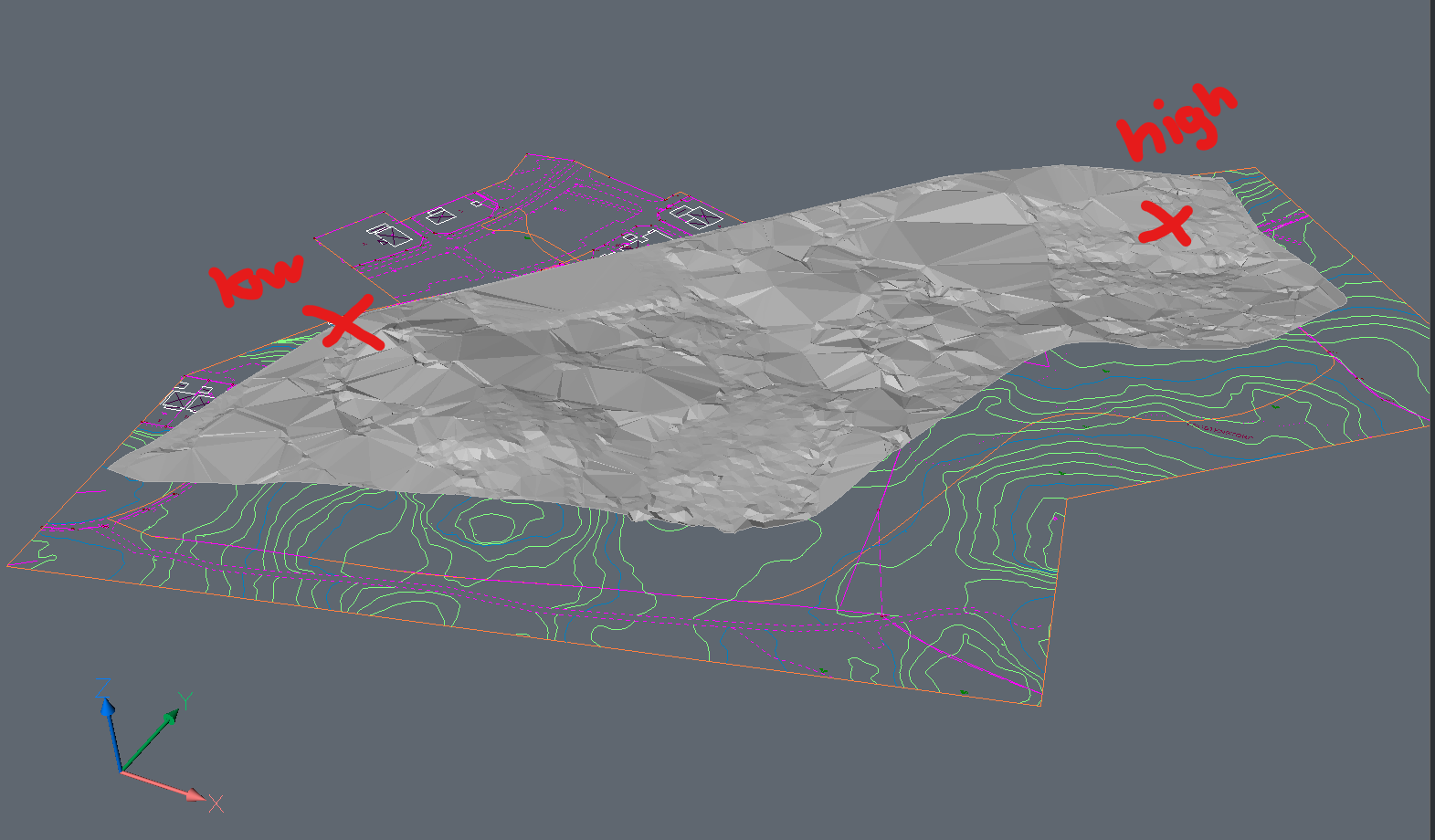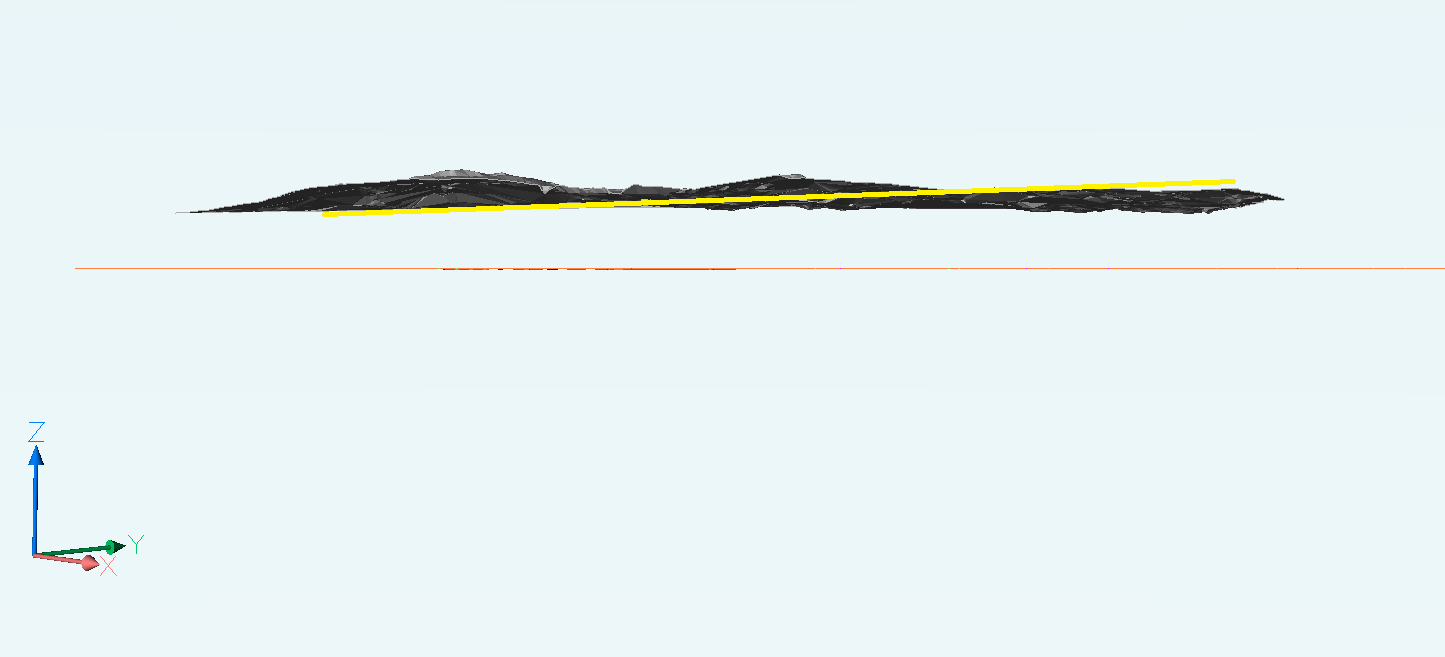Compare TIN with model and do volumetrics
Hi everyone!
I'm trying out the software and I have a TIN from a drone scan.
In this there are 2 fixed points that I need to use. The low one is 0,8% lower than the high one. Have a look at the picture with red markings.
The goal here is to make a surface within the TIN as the yellow line and then do volume comparisons.
Would be really greatful for help on how to do the calculations.
In the end the goal is to see if the material is enough to even out, according to the yellow line, and give a surplus of 5-10%.
thank you
Comments
-
Need more than a 1 dimensional answer, a volume can not be determined from a single line, but a single line can be represented by a plane and a volume calculated.
So what does the shape look like attached to the Yellow Line. You also need to take into account edge boundary constraints, so if comparing to a plane of a fixed width you would have batters at the edge. The edges can not be vertical unless your building walls.
You may need a civil add on to do what you want if the Yellow line is represented by a complex shape.
Have a look at Civil Site it is available for Bricscad.
0 -
Could you offset your yellow line to form a 4-point plane? If so you could make a surface of that and do volumes.
0 -
Thanks Terry - I'll give it a go. You recon the volume is accurate even if the 4-point plane isn't the exact shape of the TIN?
0 -
Hi Alan, the yellow line is to demonstrate only the angle of the surface which will be compared to the tin. Not sure what batters are - is it some kind of slope?
0 -
You can't calculate volumes from a line through two points, you will have to have a minimum of three points to form a triangular plane but four are recommended in this case. Offsetting the sloped 3D line to the edge of the project, creating another line with the same length and begin/end elevations (slope) would allow you to make the second surface. If you have other information to help form the 'exact shape' then apply it. The second surface would be comparable to a sloped rectangular (plane) slab. Try it and inspect your calculated numbers carefully before declaring the results.
1



